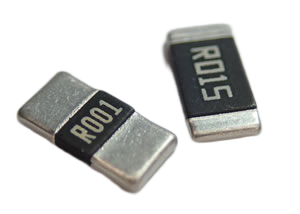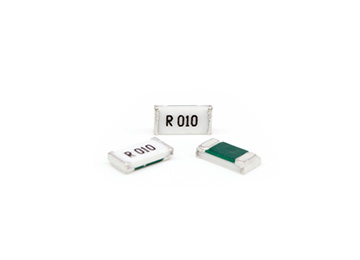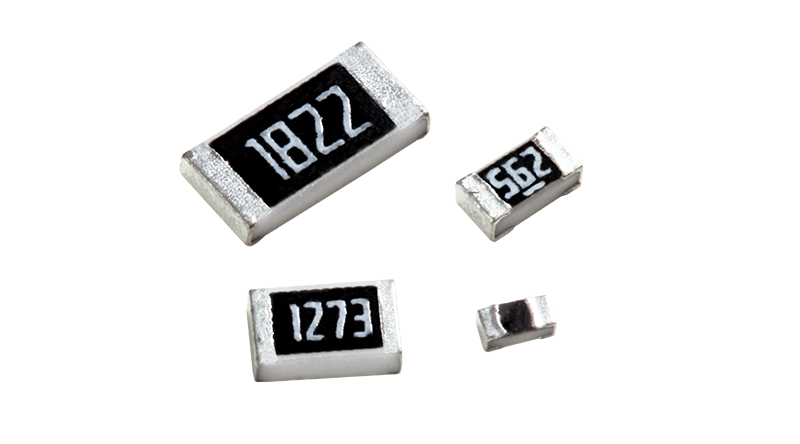Alloy resistor is a solid resistor, and the following is a detailed introduction to it:
1、 Main characteristics
The main characteristics of alloy resistors include strong resistance to temperature changes, good stability, high accuracy, and the ability to work normally in high temperature, high pressure, and high humidity environments. It also has characteristics such as low resistance, high power, and high thermal conductivity.
2、 Material composition
The main raw material of alloy resistors is a fusion of multiple metals, which is processed through a special mixing process to form an alloy material with unique resistance characteristics. Common alloy materials include manganese copper alloy, iron chromium alloy, constantan alloy, nickel chromium alloy, Kama alloy, nickel copper alloy, and ceramic alloy. These alloy materials are made into thin wires or foils through wire drawing or thin film technology, forming the core component of the alloy resistor, the resistance wire. In addition, alloy resistors also include copper leads, insulators, and casings. Copper leads are used to connect the resistor wire to the external circuit, insulators protect and fix the resistor element, and casings are used to protect the entire resistor device.
3、 Working principle
The working principle of alloy resistors is based on Ohm's law, which states that when current flows through a resistor, the resistor generates resistance, preventing the flow of current. The resistance value of an alloy resistor depends on the resistivity of the alloy material, the size and shape of the resistor body.
4、 Application Fields
Alloy resistors are widely used in various electronic devices and circuit systems, such as power converters, electronic measuring instruments, power tools, automotive electronic equipment, etc. It can be used as a current limiting element, voltage divider element, measuring element, etc. Specifically, alloy resistors are commonly used for current sampling in circuits, such as battery protection boards, power supplies, frequency converters, lighting fixtures, motors, and other products.
5、 Manufacturing process and operating procedures
The manufacturing process of alloy resistors is controlled by a few manufacturers and has international patents. There may be differences in manufacturing processes and quality among different manufacturers. In the manufacturing process, it is necessary to select suitable metal alloy materials and mix them in a certain proportion. Then, fine wires or foils are made through wire drawing or thin film technology, and heated to obtain the desired resistance characteristics. Next, the prepared resistance wire will be welded or connected to the copper lead through methods such as crimping, and encapsulated in an insulator or ceramic shell for fixation and protection.
When operating alloy resistors, the following points should be noted:
Static electricity protection: Before operation, attention should be paid to preventing the generation and accumulation of static electricity. Grounding measures can be taken, using anti-static tools such as gloves, wristbands, etc., and avoiding direct contact with alloy resistors.

Temperature control: Alloy resistors generate a certain amount of heat during operation, so suitable heat dissipation devices should be selected based on their rated power, and the operating environment temperature should be ensured to be within an appropriate range.
Installation location: The alloy resistor should be installed in a well ventilated and dry location, away from flammable materials and high humidity environments, to ensure its normal operation and extend its service life.
Connection method: Alloy resistors usually need to be connected to the circuit and should be correctly connected according to the circuit diagram or design requirements. Pay attention to checking whether the connection is loose or damaged to avoid affecting the normal operation of the resistor.
Voltage and current limitations: When selecting alloy resistors, attention should be paid to their rated voltage and current limitations to avoid overloading and damage to components. At the same time, the fluctuation range of voltage and current should also be considered, and an appropriate safety factor should be selected.
6、 Development History
The development process of alloy resistors has a long history. As early as the early 20th century, people began to study the use of alloy materials as resistance components. The earliest to appear was nickel chromium alloy resistors, which have a high temperature coefficient of resistance and are suitable for fields such as temperature measurement and control. With the continuous advancement of science and technology, metal thin film resistors were born in the 1940s and 1950s. Metal thin film resistors achieve resistance function by depositing thin films on conductive substrates, which have the advantages of small size, high accuracy, and good working stability, and have become important components in the field of wireless electronics. In the 1960s to 1980s, with the development of integrated circuits and microelectronics technology, surface mount resistors (SMT) became mainstream. SMT resistors are based on thin film resistors and have achieved high integration, compact size, and strong reliability through advanced manufacturing processes. They are widely used in electronic products. Since the 1990s, with the advancement of nanotechnology, new alloy resistor materials and manufacturing processes have emerged, such as resistors made of amorphous alloy materials that can achieve higher power density and high temperature resistance.
In summary, alloy resistors, as an important electronic component, play a crucial role in electronic devices and circuit systems. With the continuous development of technology, the materials, manufacturing processes, and application fields of alloy resistors will also continue to expand and improve.


